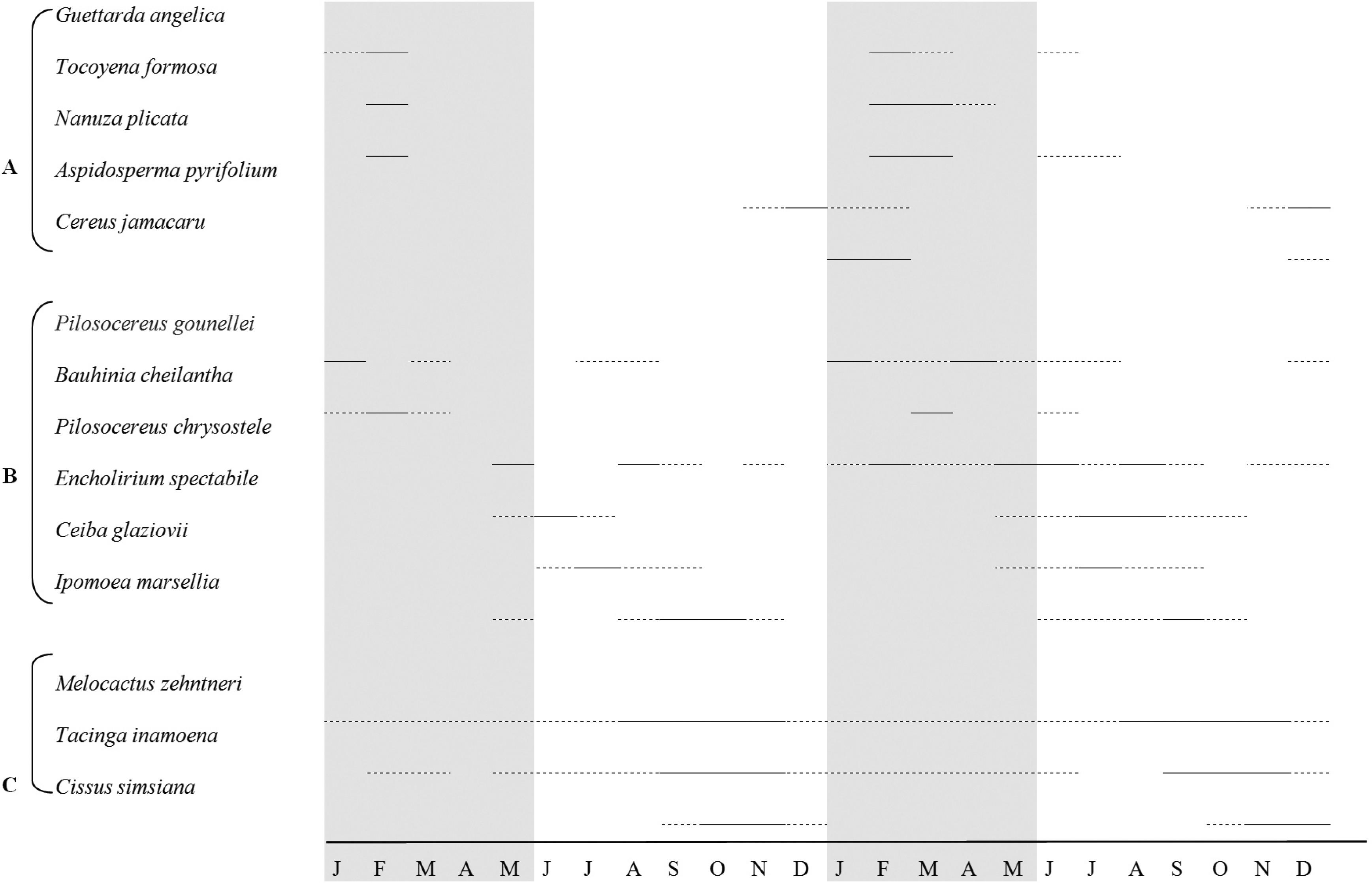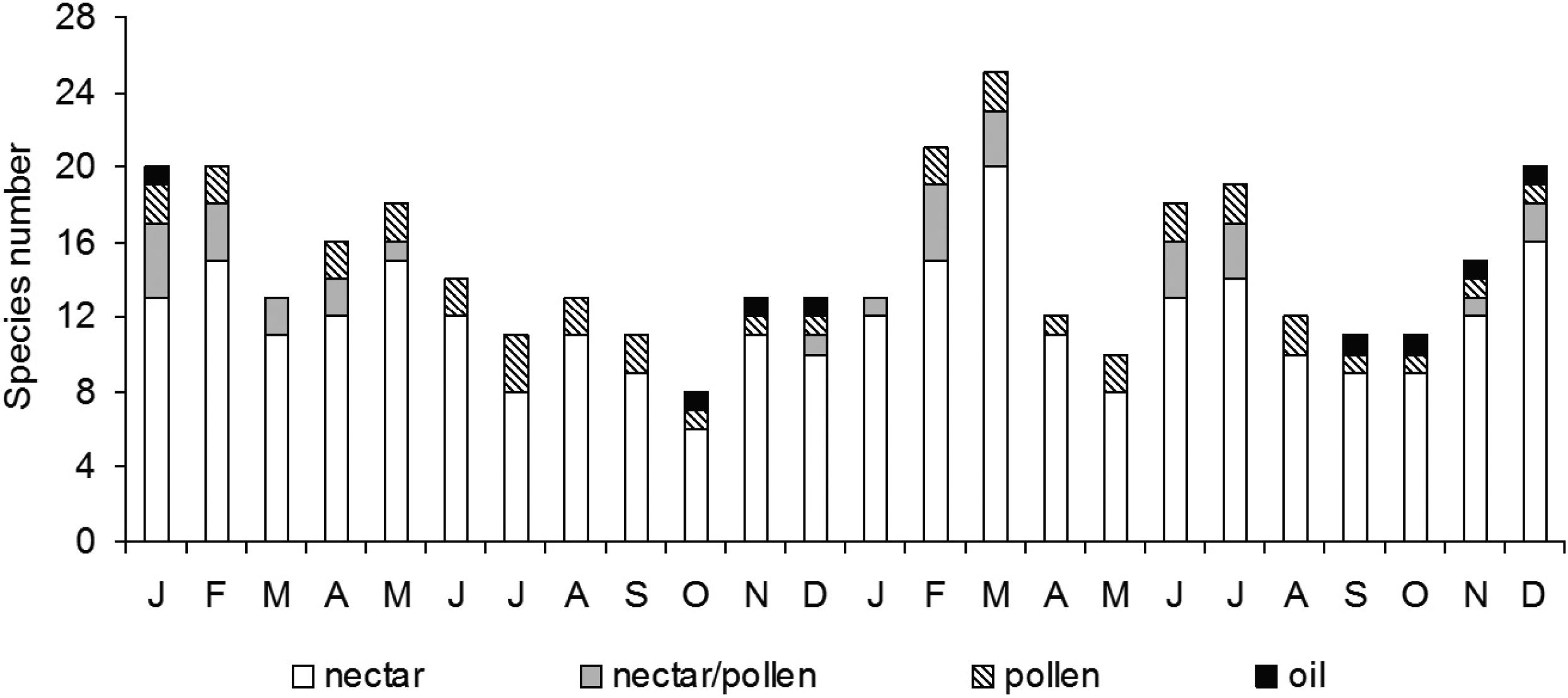To describe plant phenological patterns and correlate functioning for the quantity and quality of resources available for the pollinator, it is crucial to understand the temporal dynamics of biological communities. In this way, the pollination syndromes of 46 species with different growth habits (trees, shrubs, herbs, and vines) were examined in an area of Caatinga vegetation, northeastern Brazil (7° 28′ 45″ S and 36° 54′ 18″ W), during two years. Flowering was monitored monthly in all the species, over two years (from January 2003 to December 2004). Pollination syndromes were characterised based on floral traits such as size, colour, morphology, symmetry, floral resources, as well as on direct visual observation of floral visitors on focal plants and published information. We observed differences among the plant growth habits with respect to floral traits, types of resources offered, and floral syndromes. The flowering periods of the species varied among floral syndrome groups. The majority of the melittophilous species flowered during the rainy season in the two study years, while the species of the other pollination syndroms flowered at the end of the dry season. An asynchrony of flowering was noted among the chiropterophilous species, while the phalenophilous group concentrated during the rainy season. The overall availability of floral resources was different during the rainy and the dry seasons, and also it varied among plants with different growth habits. The availability of oil-flowers coincided with the period of low nectar availability. We observed a relationship between the temporal distribution of the pollination syndromes and the availability of floral resources among each growth habits in this tropical ecosystem. Resource allocation in seasonal environments, such as the Caatinga, can function as a strategy for maintaining pollinators, facilitating therefore the reproductive success of plant species. The availability of floral resources during all the year, specially in seasonal environments such as the Caatinga, may function as a strategy to maintain pollinator populations ensuring the reproductive success of the plants.
pollination syndromes; floral resources; dry forests; seasonality




